What are Angular Contact Ball Bearings
Angular contact ball bearings are specialized rolling bearings designed to handle both radial and axial loads simultaneously, thanks to their unique angular contact. These bearings are a vital component in a wide range of machinery and are used in various industries from automotive to aerospace. They are particularly beneficial for applications requiring high-speed operation and the ability to handle a combination of radial and thrust loads.
The distinctive feature of angular contact ball bearings is the angle between the ring and the balls. Unlike deep groove ball bearings, which have a nominal contact angle of 0 degrees, angular contact bearings have a contact angle that can vary from 15 to 40 degrees. This angle allows them to withstand significant axial loads in one direction alongside radial loads. The greater the contact angle, the higher the axial load capacity.
When in operation, the inner ring, balls, and cage of an angular contact bearing may rotate at high speeds while maintaining a consistent point of contact with the outer ring, which is stationary. This design means that one shoulder on each ring is higher than the other, facilitating the accommodation of axial loads and allowing for precise control of rotational speed and torque transfer.
Manufacturers, repair shops, and end-users across various sectors such as construction, agriculture, printing, and general manufacturing frequently employ these bearings. They are especially crucial in high-precision applications where angular accuracy and high-speed rotation are essential.
Types of Angular Contact Ball Bearings
Angular contact ball bearings come in various types to suit different application needs:
Single Row Angular Contact Ball Bearings: These are the most common type and can accommodate axial loads in one direction only. They must be adjusted against a second bearing to balance counter-forces. These are widely used in pumps, compressors, and industrial gearboxes.
Double Row Angular Contact Ball Bearings: These have two sets of balls with a common sphered raceway in the outer ring. They can handle axial loads in both directions and offer higher rigidity. You'll often find these in automotive applications like wheel hubs.
Four Point Contact Ball Bearings: These can support axial loads from both directions even when there is only one bearing present. The split inner ring design enables a large number of balls to be incorporated into the bearing, providing it with higher load capacity. They are suitable for applications such as turntables or milling heads.
Precision Angular Contact Ball Bearings: Designed for high-precision applications with specific dimensional tolerances and surface finishes. These bearings are used in machine tool spindles where high speeds and accuracy are vital.
Self-Retaining Angular Contact Ball Bearings: With no need for mounting spacers or bearing adjustment during installation, these bearings simplify the assembly process. They're ideal for use in parts that require simple assembly procedures.
How to Choose Angular Contact Ball Bearings
Selecting the right angular contact ball bearing involves considering several factors:
Precision Rating: For applications that demand high precision like CNC machinery or aerospace components, P4 or P5 ratings may be necessary, while general industrial uses might only require P0 or P6 ratings.
Number of Rows: Single-row bearings are suitable for most standard applications, but double-row types provide higher load capacities and stiffness for demanding operations such as automotive wheel hubs.
Material: The choice of material impacts durability and performance. Chrome steel is common due to its strength, but stainless steel or ceramics might be preferred for corrosion resistance or high-speed applications.
Structure: Depending on the applied load direction and magnitude, you might opt for single or double row structures, or even four-point contact designs for unique load-handling capabilities.
Application: Consideration of specific industry requirements is crucial; for example, high-speed requirements might necessitate a different bearing configuration than those needed for heavy load-bearing machinery.
Best Angular Contact Ball Bearings on Alibaba.com
Alibaba.com stands out as a global marketplace connecting businesses with an extensive range of angular contact ball bearings suited to various industrial needs. It offers an expansive selection that caters to specific requirements from precision machinery to heavy-duty applications. With suppliers from all around the world listed on the platform, businesses can find products that meet their technical specifications without compromising on quality or cost-effectiveness.
The platform's commitment to facilitating trade across borders is evident through features like mobile buying capability and support for local languages, making it simple for buyers anywhere to navigate through an assortment of products. Furthermore, Alibaba.com's Trade Assurance service underscores its dedication to secure transactions by protecting payments until order fulfillment is confirmed.
For businesses aiming to leverage international trade opportunities while ensuring reliable sourcing of industry-specific components like angular contact ball bearings, Alibaba.com presents an unparalleled convenience. Whether you're looking at standard models or seeking custom solutions tailored to unique operational demands, this digital wholesale marketplace offers an accessible route to quality suppliers and products necessary for driving business growth.
Common FAQs for Angular Contact Ball Bearings
What are the advantages of angular contact ball bearings over deep groove ball bearings?
Angular contact ball bearings are designed to handle a combination of radial and axial loads, offering greater thrust load capacity and allowing for higher running speeds. They are ideal for applications that require precise axial and radial rigidity.
Can single row angular contact ball bearings handle loads from both directions?
No, single row angular contact ball bearings are typically designed to accommodate axial loads in a single direction only. For bidirectional axial load handling, double row or four point contact ball bearings would be more suitable.
What does the contact angle in an angular contact ball bearing imply?
The contact angle in an angular contact ball bearing refers to the angle between the line joining the points of contact of the ball and the raceways in the radial plane, along which the combined load is transmitted from one raceway to another. A higher contact angle allows for higher axial load capacity.
How do I choose between different precision ratings for angular contact ball bearings?
The choice of precision rating for angular contact ball bearings should be based on the specific requirements of the application, such as rotational speed and accuracy. Higher precision ratings (P4, P5) are necessary for high-precision machinery, while standard ratings (P0, P6) may suffice for general applications.
What material options are available for angular contact ball bearings?
Angular contact ball bearings can be made from various materials including chrome steel, stainless steel, carbon steel, and ceramic materials. The choice depends on the application's demands regarding load capacity, speed, and environmental conditions.
Are there specific types of angular contact ball bearings for high-speed applications?
Yes, there are precision angular contact ball bearings designed with high-speed capabilities in mind. These often have specific design features such as lighter cage materials or ceramic balls to reduce friction and heat generation.
What is the significance of having a 'sealed' versus 'open' angular contact ball bearing?
Sealed angular contact ball bearings have seals on both sides to prevent contaminants from entering and lubricant from escaping. Open bearings do not have these seals and may require more frequent maintenance but allow for easier lubrication access.
When would I require a double row angular contact ball bearing?
Double row angular contact ball bearings are typically used when there is a need for higher load carrying capacity or when the bearing arrangement needs to support tilting moments.
Can angular contact ball bearings be used in high-temperature environments?
Some angular contact ball bearings are specifically designed to withstand high-temperature environments. It is crucial to select a bearing with the appropriate material and lubrication that can operate reliably under elevated temperatures.

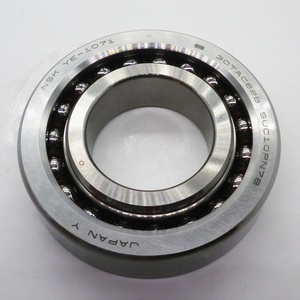

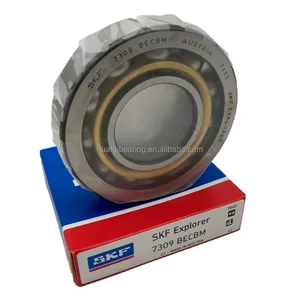

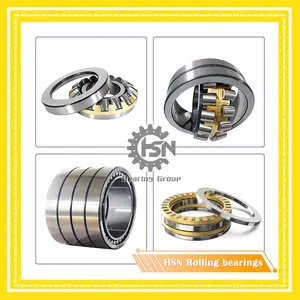


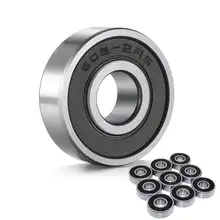
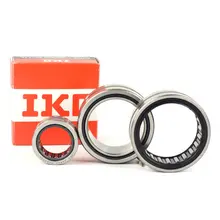
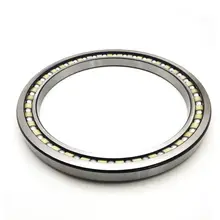
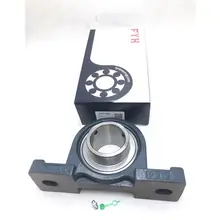
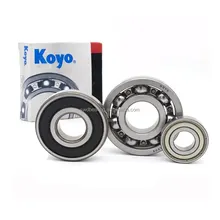

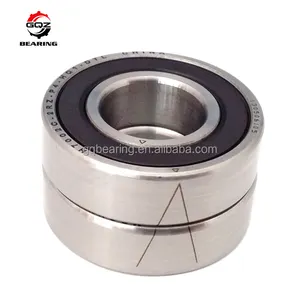



















 浙公网安备 33010002000092号
浙公网安备 33010002000092号 浙B2-20120091-4
浙B2-20120091-4